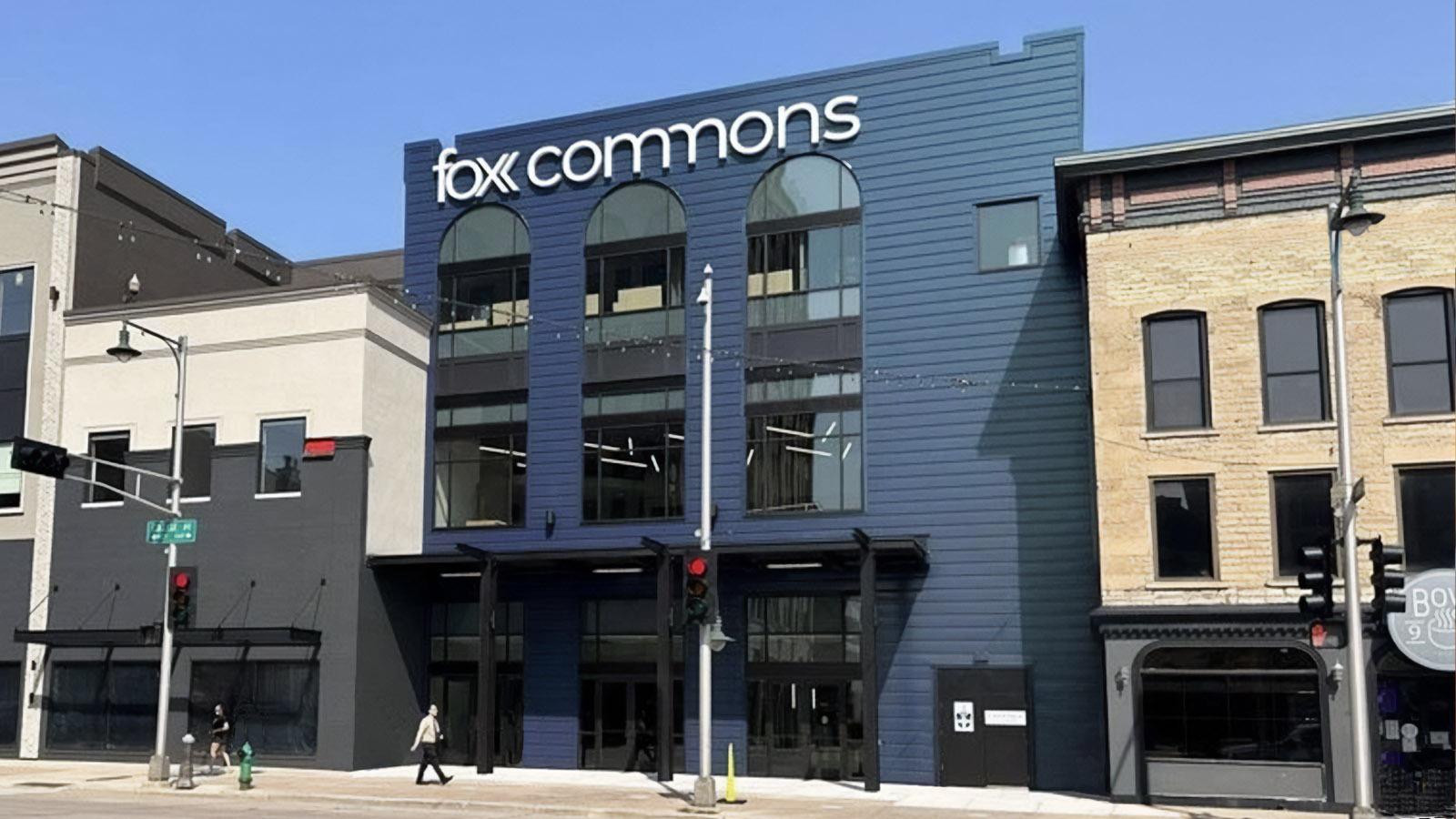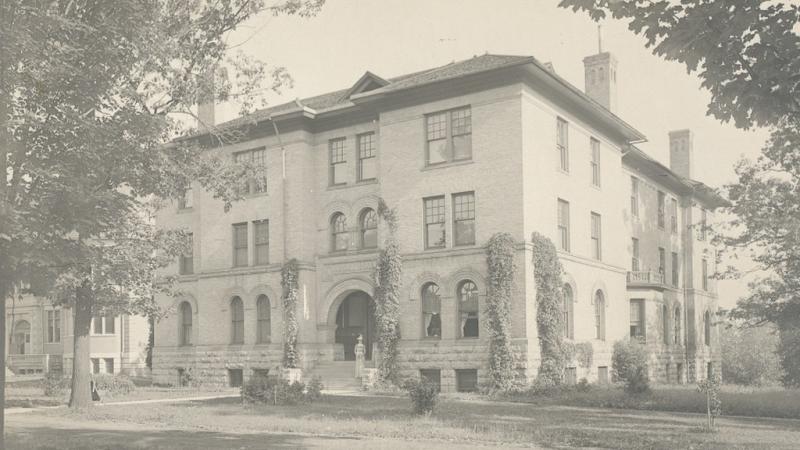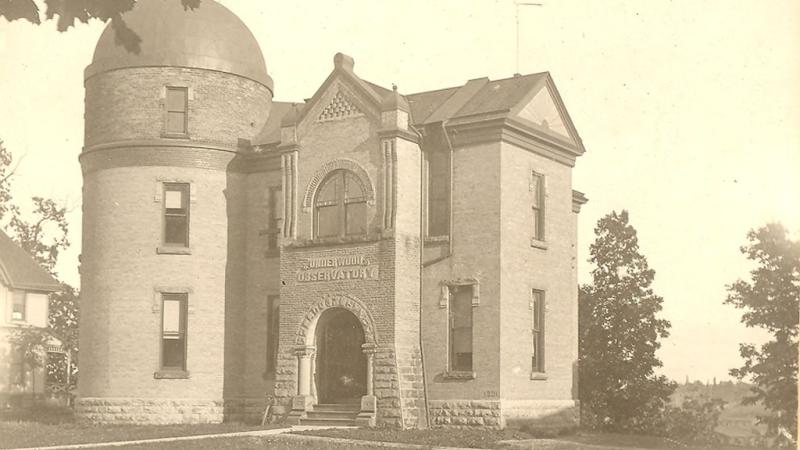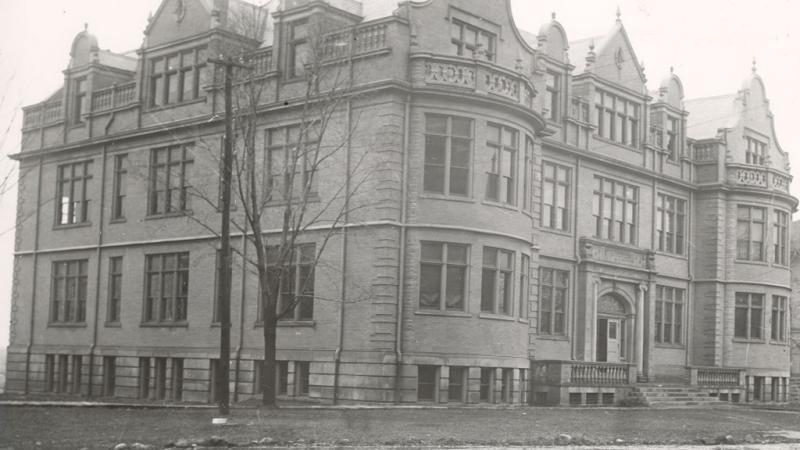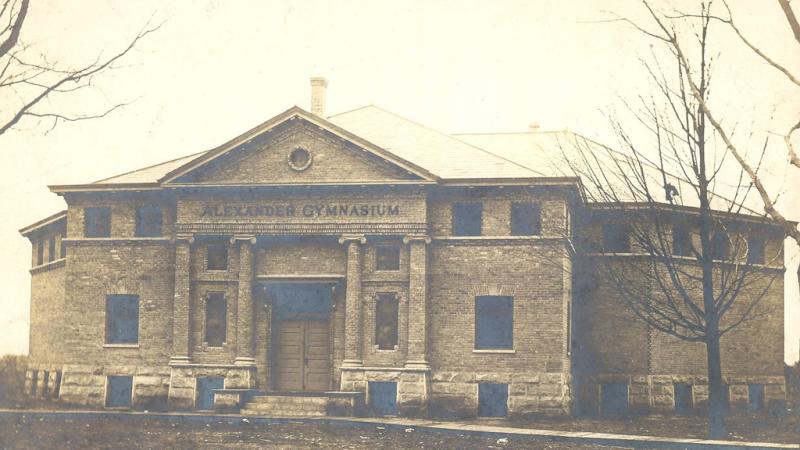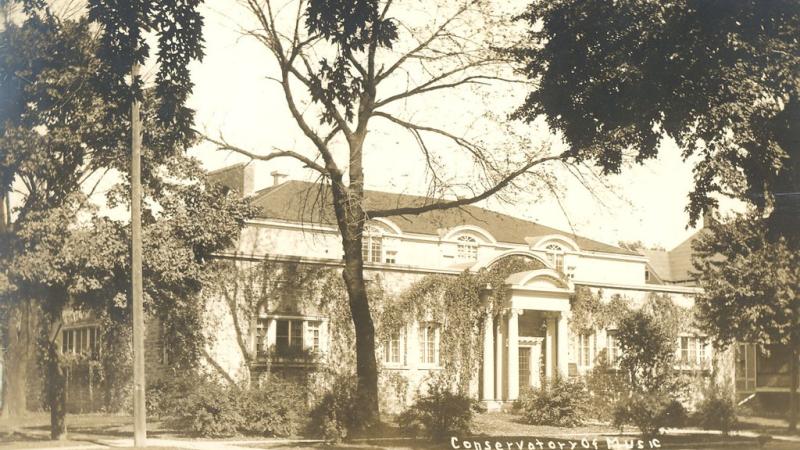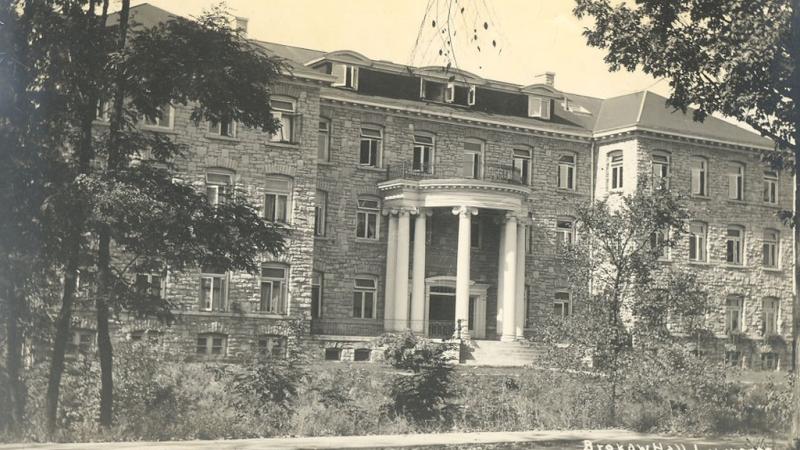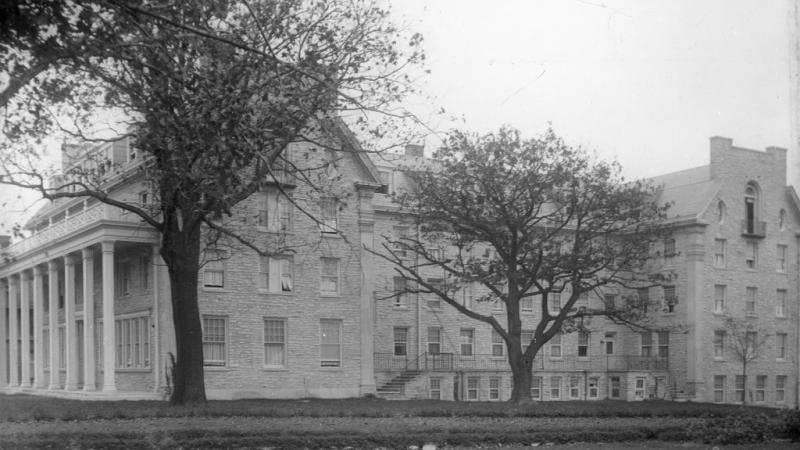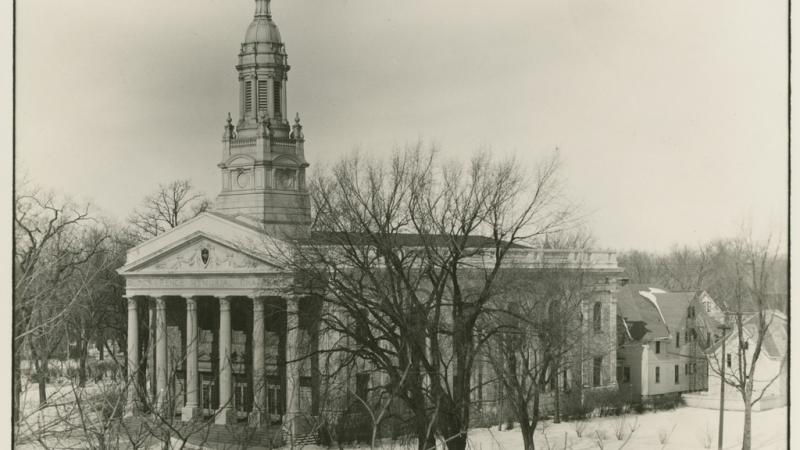I have been thinking...of the establishment of an
institution of learning or college on the...land,
and there seems to be a good opportunity, not only
for improving the morals and the standard of
education in that vicinity, but also of conferring
a lasting benefit on a portion of our countrymen
who most need it.
1847 - Chartering Lawrence University
Amos A. Lawrence, a Boston merchant, commissioned Rev. William Harkness Sampson, Rev. Henry Root Colman, and Rev. Reeder Smith to establish a school on land he owned in the Wisconsin Territory. Lawrence pledged $10,000 to endow the school, on condition that the Methodists, represented by Sampson and Colman, match his gift. On January 15, 1847, even before the money could be raised, the Territorial Legislature granted a charter to Lawrence Institute.
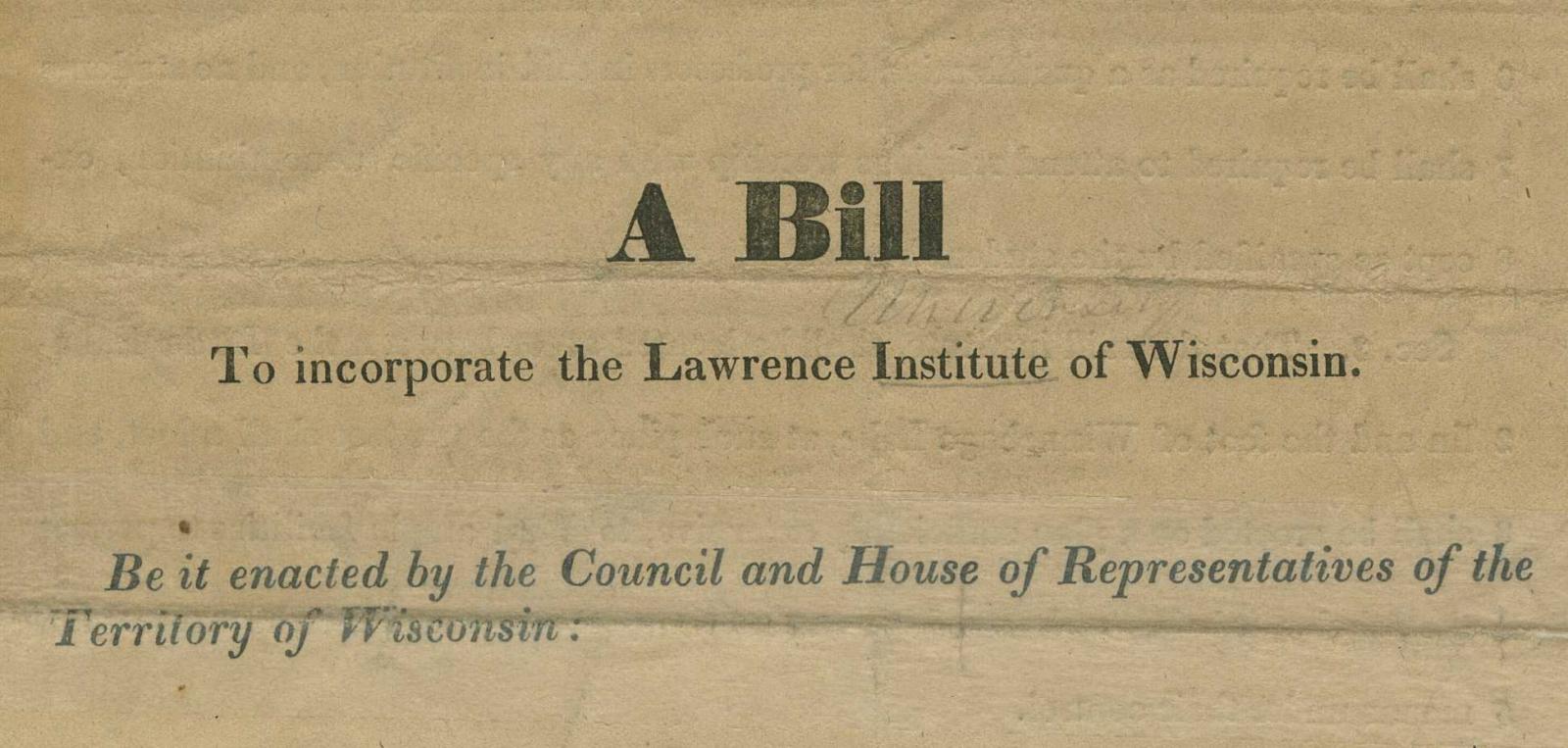
Heading from the Wisconsin State Legislature bill that approved the charter for Lawrence Institute, 1847
1849 - First classes begin
Classes began on November 12, 1849 under the name Lawrence University.
1857 - First class of graduates
The first class of students graduates from Lawrence University, comprised of 3 women and 4 men.
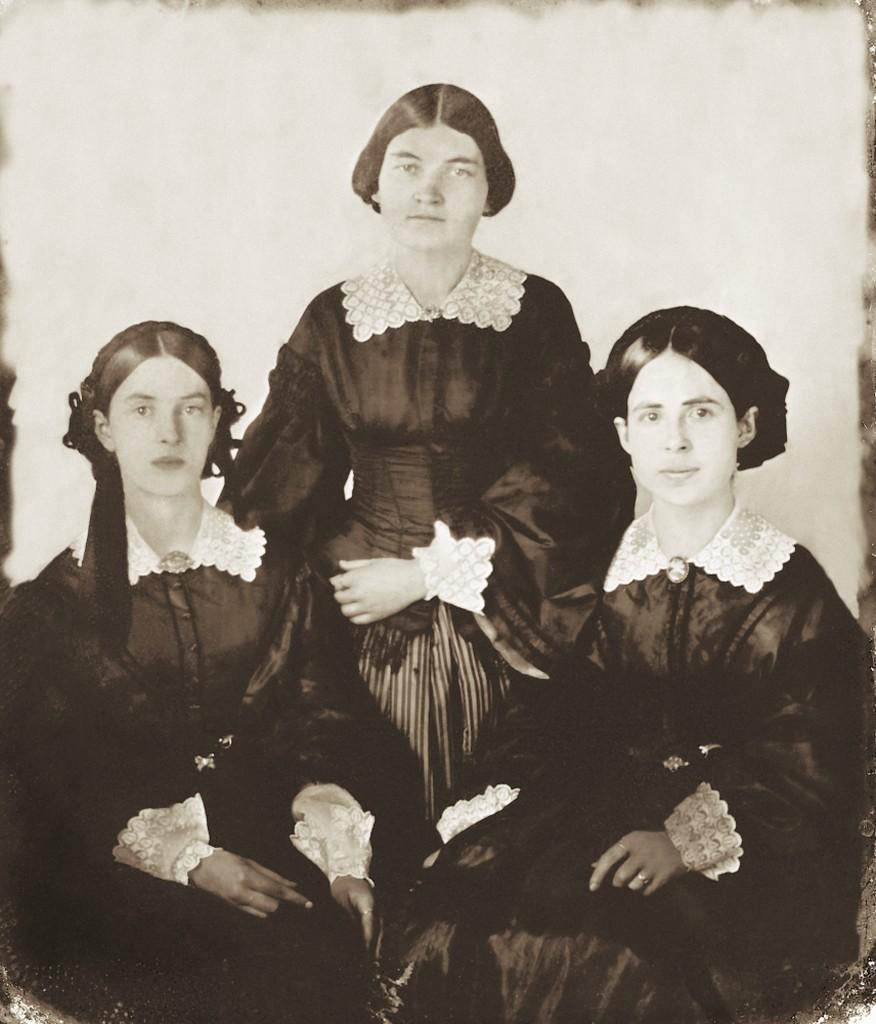
Women of the first graduating class, the class of 1857. From left to right: Francena Kellogg Buck, Adelaide Grant Carver, and Lucinda Darling Colman.
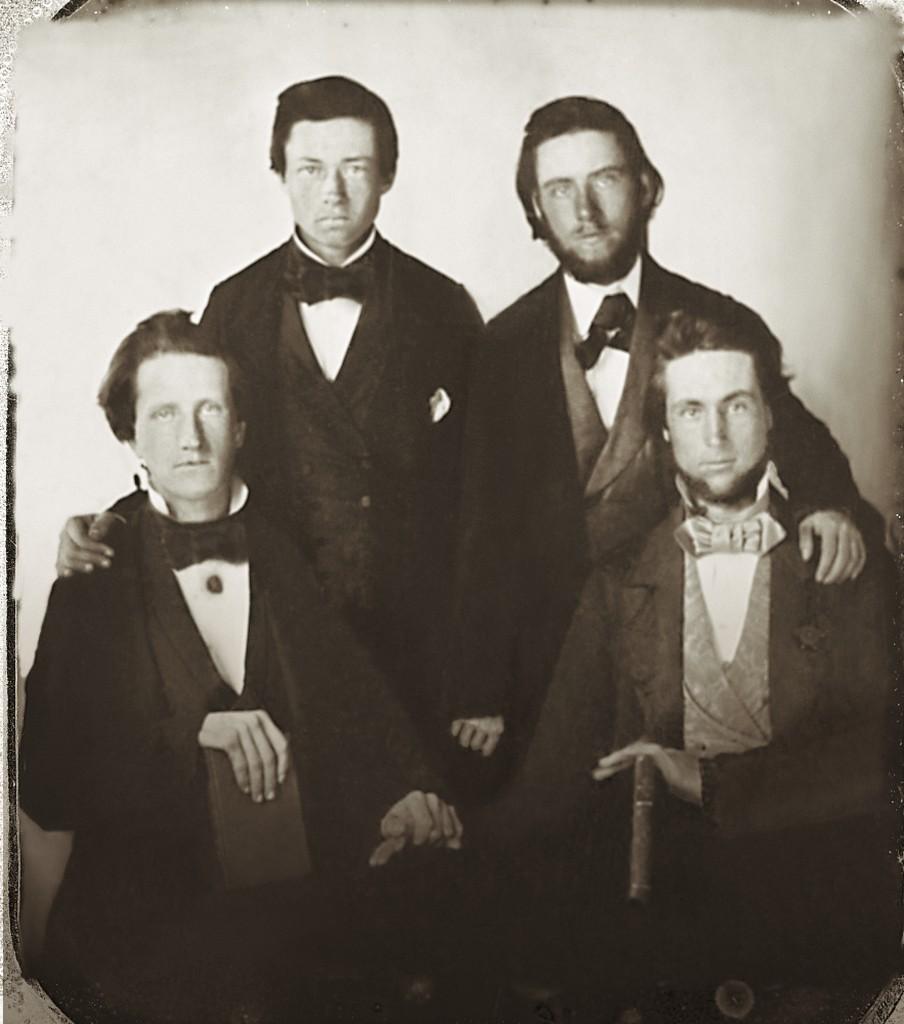
Men of the first graduating class, the class of 1857. From left to right: Henry Colman, William Dolphin Storey, Allen Jeffrey Atwell, and Justin Martyr Copeland.
The first 40 years
Lawrence struggled with the problems of a developing frontier: the failure of wheat crops, the disruptions of the Civil War, and the chaos of financial panics. Through it all, seven different college administrations held fast to the tenets of a strong classical education.
The early curriculum, though constrictive by today’s standards, was on the whole rather broad for the time, and the alumni of that era attained distinguished careers in education, business, the ministry, law and politics.
1874 - Lawrence Conservatory of Music established
The Lawrence conservatory of music was established but lasted only briefly. It was later re-established in 1894.
1894 - Lawrence grows under President Plantz
Dr. Samuel Plantz, class of 1880, was installed as president of the college on September 26, 1894. During his 30-year administration Lawrence grew substantially. The student body increased from 200 to 800 and the faculty increased from nine to 68. He also worked to grow the endowment from less than $100,000 to $2,000,000. Eight major buildings were also constructed on campus during his tenure.
1904 - Conservatory of Music grows
During Plantz’s administration, Lawrence’s pursuit of academic excellence was reflected in the selection of its first Rhodes Scholar in 1904 and the establishment of a Phi Beta Kappa chapter in 1914.
Also during this time the Conservatory of Music came into its own as a separate part of the university with the addition of six faculty members, the introduction of curricular offerings in public school music and music history and the acquisition of a building devoted exclusively to music instruction.
1913 - New name adopted
The institution adopted the name Lawrence College to underscore its commitment to undergraduate liberal education, during a time where many schools with the name "university" were large land-grant institutions.

Promotional lantern slide, circa 1930
1929 - Institute of Paper Chemistry established
In conjunction with the paper making industry in the area, Lawrence established the Institute of Paper Chemistry. It was a graduate institute for training paper chemists, organized by Lawrence but financed by the paper industry. The Institute had its own Board of Trustees and operated its own budget, and Lawrence awarded Master of Science and Doctor of Philosophy degrees to graduates of the Institute.
1933 - Tutorial courses introduced
That commitment to liberal arts education received further articulation during the administration of President Henry Merritt Wriston (1925-1937), when the college charted a course that it has followed faithfully to the present day, including the 1933 introduction of tutorial courses. In the words of the catalog of 1934,
The ultimate purpose of liberal education at Lawrence is the establishment and improvement of standards—standards of thought and expression, of taste and interest, of character and ethics, of health and sane living.
1945 - First-year studies implemented
Freshman Studies, today called First-year studies, was implemented into the curriculum thanks to the advocacy of President Nathan Marsh Pusey (1944-1953). The course is taught over two terms, with students divided into small groups and taught by faculty from across the institution, focusing on encouraging intellectual curiosity in the liberal arts, as well as building skills in critical thinking and writing.
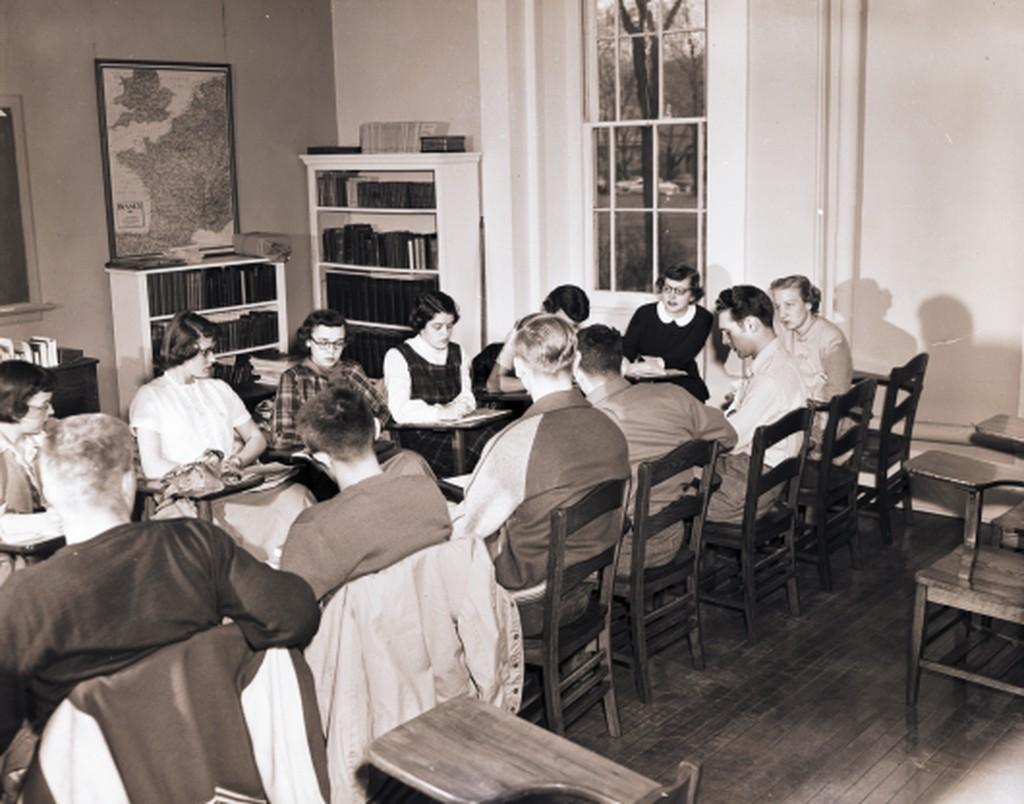
Freshman Studies, now called First-year Studies, class, 1950
1956 - Lawrence expands under President Knight
Colman Hall, the first of 5 buildings constructed during the tenure of President Douglas Knight (1954-63), was constructed. Other buildings constructed during Knight's tenure were the Music-Drama Center, Plantz Hall, Trever Hall, and Youngchild Hall. The construction of these buildings allowed for the increase in student body size from roughly 800 to 1200 undergraduates.
1963 - Björklunden established
Björklunden vid Sjön, Swedish for "Birch Grove at the Lake" (but commonly translated to "Birch Forest by the Water") is a 441-acre estate on the Lake Michigan shore just south of Baileys Harbor in Door County, Wisconsin. A place of great beauty and serenity, the estate was bequeathed to Lawrence University in 1963 by Donald and Winifred Boynton of Highland Park, Illinois. Since 1980, Lawrence has offered a series of adult-education seminars at Björklunden, and since 1996 the facility has been open for weekend visits by classes and student groups.
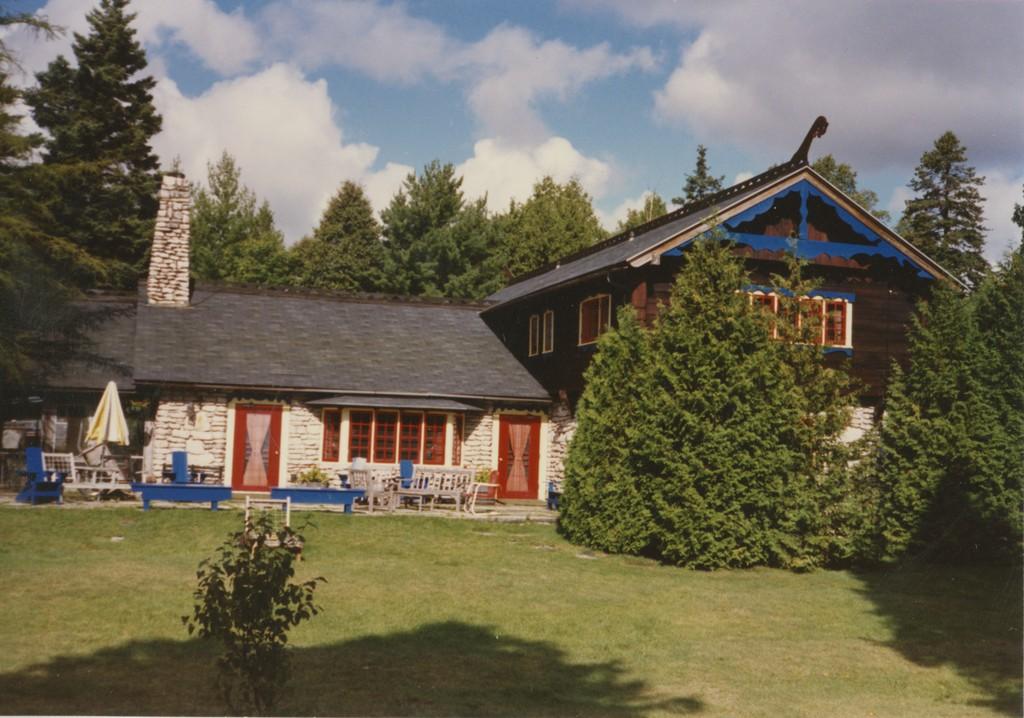
The original lodge building at Björklunden, circa 1983
1964 - Merge with Milwaukee-Downer College
Under the leadership of President Curtis W. Tarr (1963-69), Lawrence once again assumed the name Lawrence University, when it was consolidated in 1964 with Milwaukee-Downer College for Women. Milwaukee-Downer, named in honor of its trustee and benefactor, Jason Downer, was itself the product of a merger in 1895 between Milwaukee Female College and Downer College of Fox Lake. Both schools had pioneered in the education of women, and Milwaukee Female College had benefited early on from the interest of Catharine Beecher, a sister of Harriet Beecher Stowe, who provided the institution with an advanced program of high educational standards. The Lawrentian reported the news, and presented the opinion of the chairman of Milwaukee-Downer's Board of Trustees, Charles W. Stone:
Stone emphasized that the trustees intend to promote the character and traditions of Downer throughout the reorganization and in the future. 'Downer’s heritage will not be diluted, nor will Lawrence’s,' he said. 'Rather, each will be strengthened and enhance the other.'
1967 - First off-campus program offered
After a year of planning, the first Lawrence run off-campus program began in the summer of 1967 in Böennigheim, Germany. Students who attended for the 6 month, two-term session lived and took classes in a single building in the town. By 1969 the center had moved to Eningen, Germany and Lawrence began offering additional off-campus experiences including seminars in Paris, Rome, Madrid, and a tour of Eastern Europe.
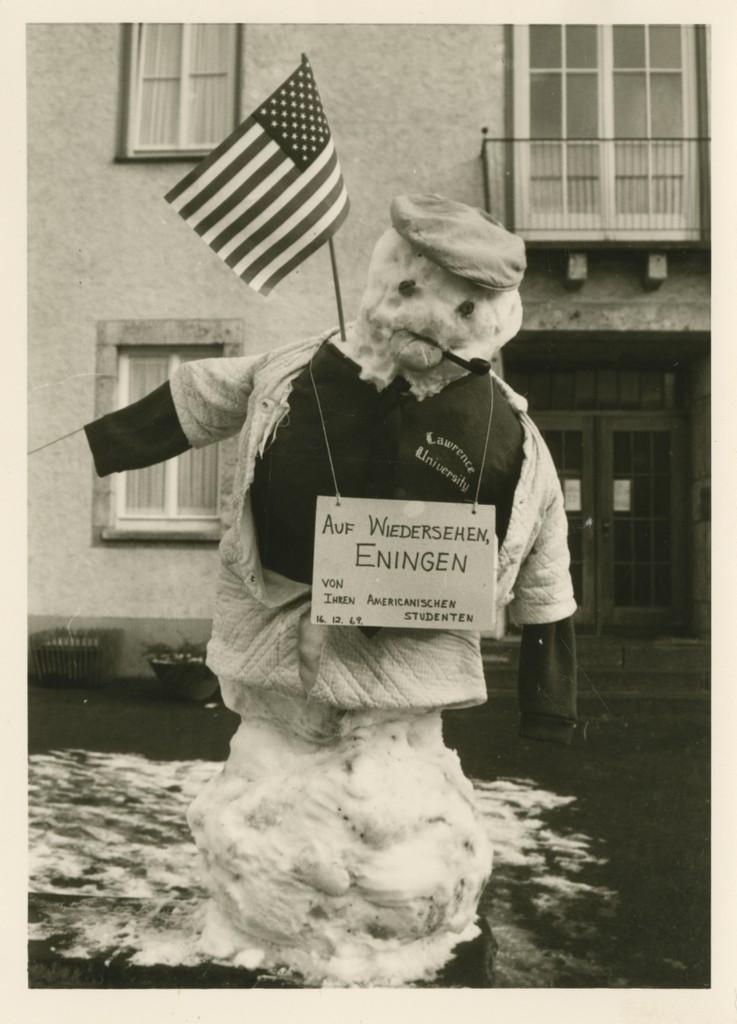
Snowman built by Lawrence students in Eningen, Germany, 1969
1971 - Lawrence history recognized
Lawrence University was recognized as the first coeducational college in the state of Wisconsin and named an Official Wisconsin Landmark and historical site at the regional meeting of the Wisconsin Council for Local History.
1974 - Women's sports established
Though intramural sports have always been popular among students, tennis was the first intercollegiate varsity women's athletic team established. Basketball followed in 1975, and soon after track and field, cross country, volleyball, soccer, swimming, and softball.
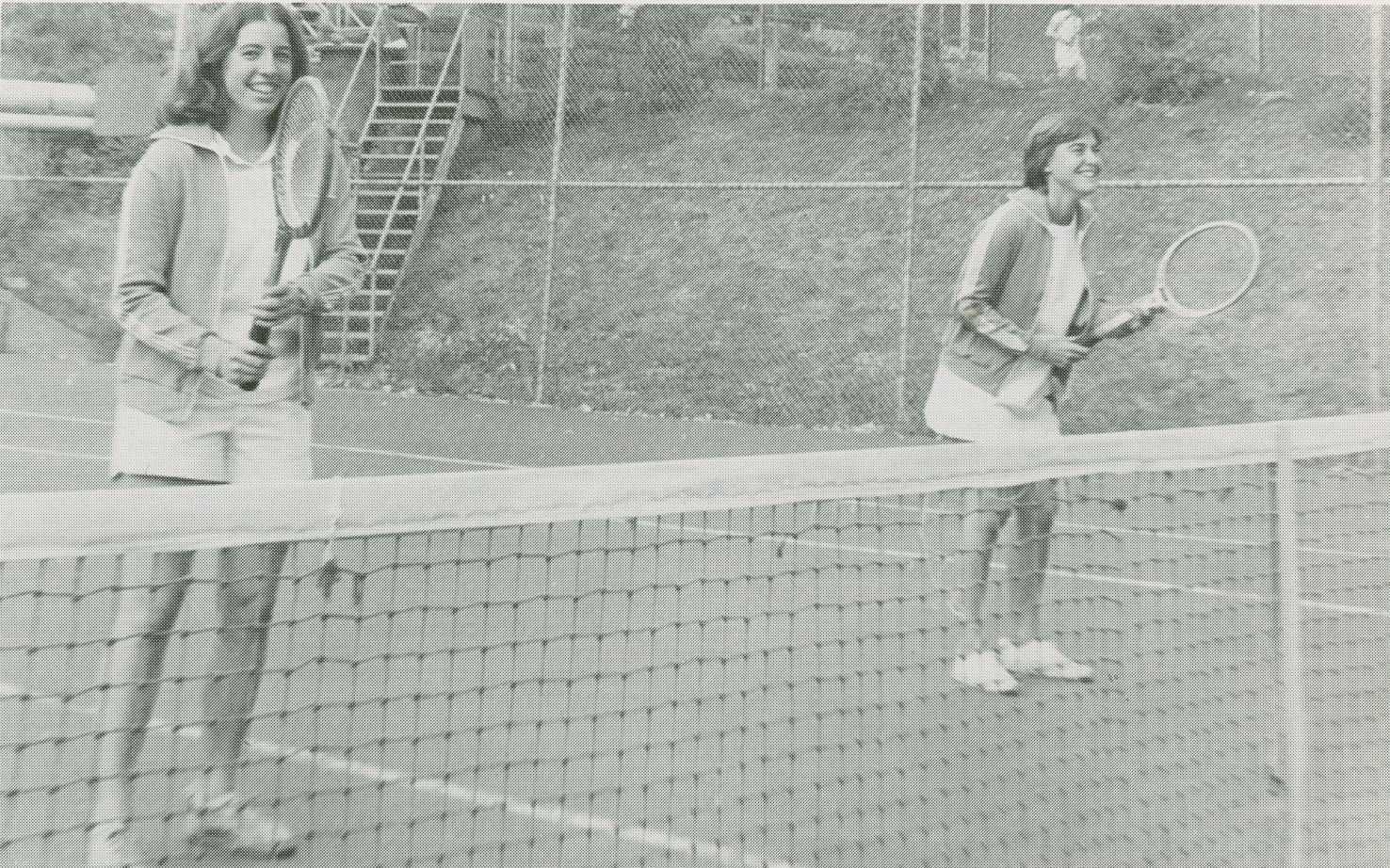
Members of the 1974 Women's tennis team
1976 - Winter Carnival tradition begins
The first Winter Carnival was held. Events included a poetry reading, scavenger hunt, snow sculpture contest, figure skating demonstrations and lessons, maple syrup candy, music, and sledding. The tradition lasted a number of years before taking a hiatus and making a return in 2011. Today's Winter Carnival has many of the same beloved events as the first iteration.
1981 - Jazz Celebration Weekend
To bring a focus to jazz music in the Conservatory, professor Fred Sturm (1977-1991, 2002-2014) organized the weekend long event with participants from area high schools as well as Lawrence students. Each year the event brings renowned professional jazz artists to campus for educational workshops and performances to encourage improvisation and jump-start inspiration among ensembles. Fred Sturm commented to The Lawrentian on the planned events:
The emphasis on this, the First 'Jazz Celebration Weekend,' is on jazz education. It is an excellent opportunity for the Fox Valley to see all realms of jazz education. In addition to area talent, we are fortunate to have with us seven guests.
1989 - World Records claimed
Lawrence students and Appleton citizens succeeded in claiming the title of "Most People Sledding Down a Hill in a Toboggan" with 187 people on a 104-foot toboggan. The event was memorialized in the 1989 edition of the Guinness Book of World Records. What would go on to claim the title "World's Largest Popsicle" in the 1990 edition of the Guinness Book of World records was created by Lawrence faculty, students and Boldt Construction and displayed at Appleton's Icescape winter festival. Free samples of the enormous popsicle were given to long lines of festival goers. A third world record was attempted by Lawrence students in 1991, but the record of "Most Pizzas Ordered by a Campus in a Single Day" went to Ripon College, who ordered 536 Domino's pizzas to Lawrence's 486.
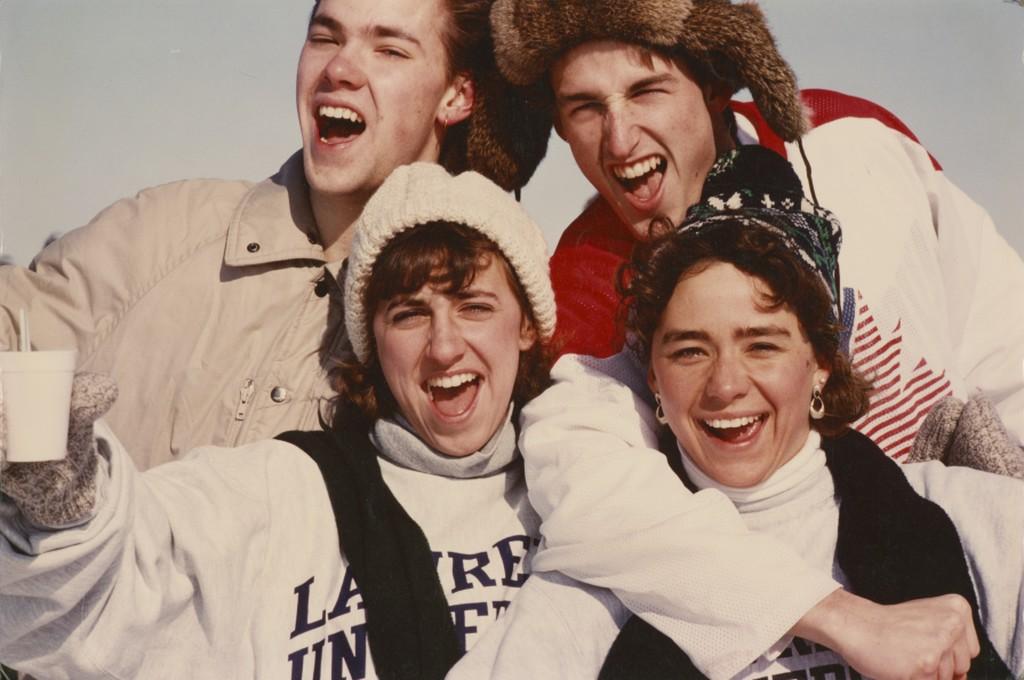
Students participating in world record toboggan event, 1989
1996 - New Björklunden lodge
After a fire heavily damaged the original lodge, a new larger building was built and opened in August 1996. Throughout the planning process the Board of Trustees were encouraged to think about a new way to use the lodge- hence our commitment to student-faculty shared use of the space.
2005 - Day of service
An annual tradition begins with the first Martin Luther King, Jr. Day of Service, on which the entire Lawrence community is encouraged to participate in volunteer projects around Appleton as a way to commemorate Martin Luther King, Jr. Day.
2009 - Warch Campus Center
The Warch Campus Center, named after Richard (president 1979-2004) and Margot Warch, opened. The building is LEED Gold certified for meeting sustainability goals in energy conservation, environmental friendliness, and green building. It serves as a hub of campus activity including dining services, the campus mail room, a cinema, and many meeting spaces.
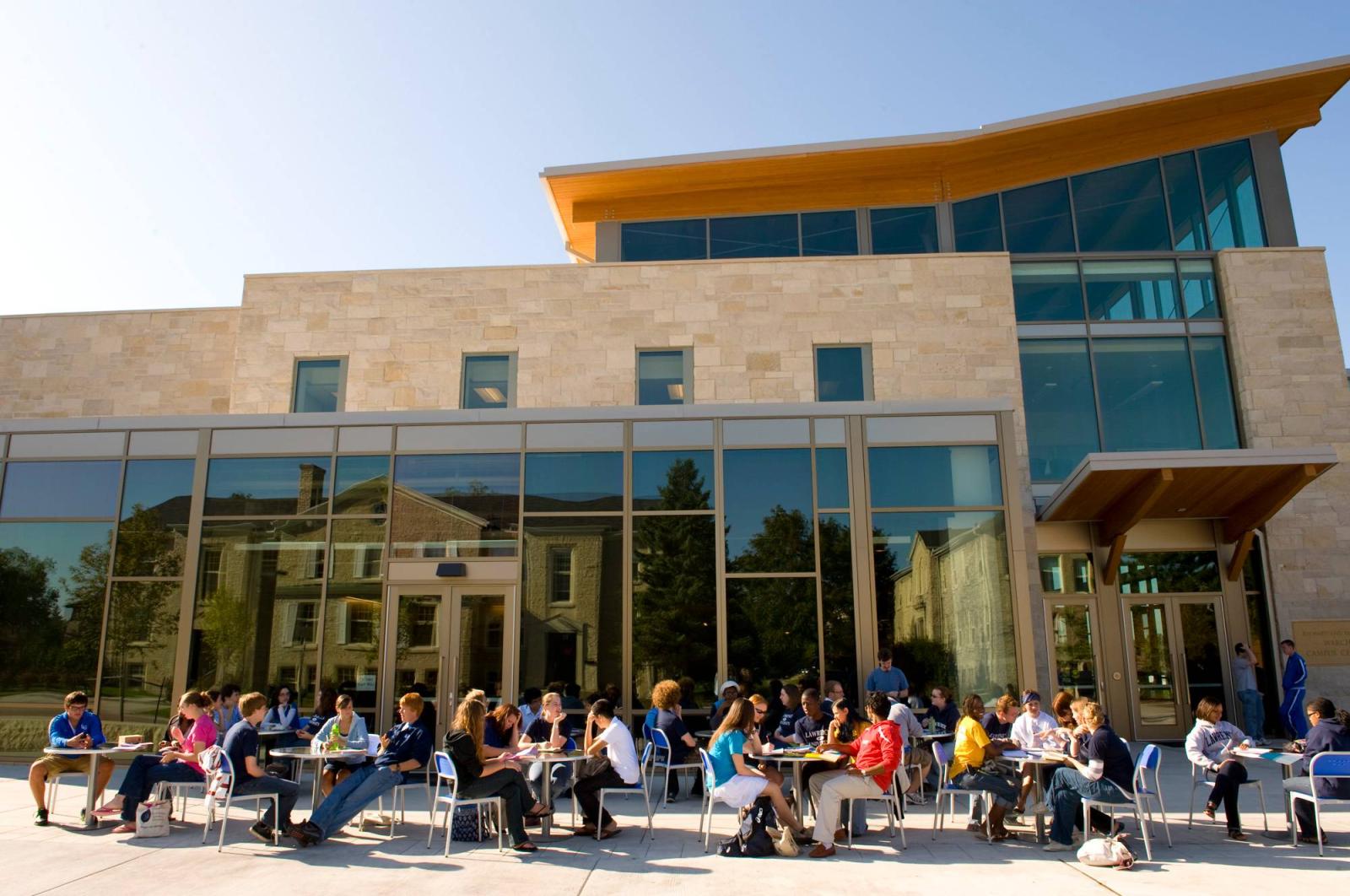
Warch Campus Center, 2009
2014 - Giving Day
The first annual Giving Day is held, raising over $1.1 million for The Lawrence Fund.
2024 - Fox Commons
The first phase of Fox Commons is completed, which blends apartment-style living, including space for 190 beds, with the opportunity for collaboration and mentorship with partner organizations through learning spaces including Business & Entrepreneurship and Pre-health Centers.
